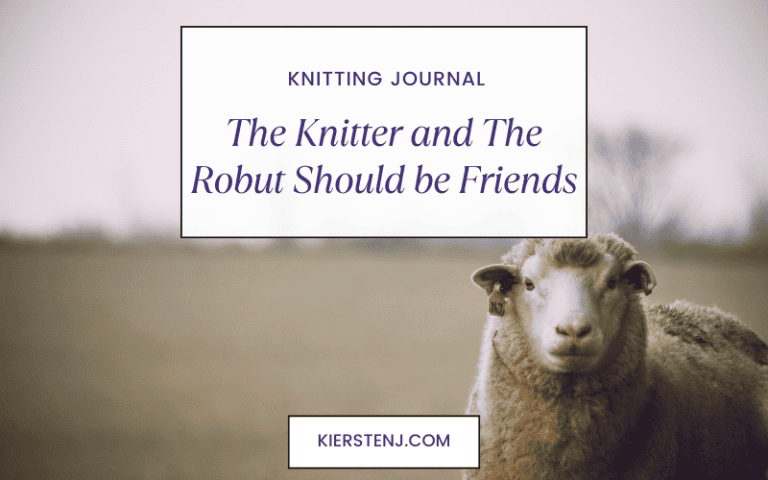You Spin Me Right Round
Week 2 of Beast to Blanket is in the books, and the kids and I had a fantastic time!
This week was all about spinning wool into yarn. The first item on the lesson agenda was to remind them that wool comes from sheep and sheep are not known for their sanitary state of being. We looked at raw wool, straight from our wee herd, and appreciated both the yuck AND the unique characteristics of each sheep’s (and breed’s) wool.

Next, I gave a demonstration of spinning yarn with a spinning wheel.
I have to admit I feel pretty cool when I get to do a spinning wheel demonstration. I find that most non-knitters have never seen someone operate a spinning wheel before. Adults tend to think it’s a pretty neat skill. Kids think it’s magical.
I had to do a little reassembling of my wheel when I got it into my classroom on Monday morning, which further required some adjustments for proper tension, etc. I happen to use the same room that is used for the assembly that occurs before the kids are dismissed for their first classes. About twenty minutes before the assembly, I had a whole bunch of kids watching who had been attracted to the weird activity happening with, as one child described, “the most ancient piece of equipment he’d ever seen.”
They ask the most interesting questions:
- “Did you make this?” referring to everything from the wheel to the wool roving I was spinning to all the demonstration pieces.
- “How long does it take to make ____?”
- “What are you making move with your feet?”
- “Where does the yarn go?”
- “Why do you sometimes go fast and sometimes slow?”
- “How do you make thicker/bigger yarn?”
- “Who taught you to do this?”
- “What do you make with this yarn?”
- “Is it fun?”
- “Can I try?”
All this before my class even started!

We went into more detail during the class, and I told them that while the spinning wheel wasn’t invented until around the 13th century, hand spindles have been around much longer. In fact, archaeologists find hand spindles most everywhere else they find the earliest kinds of tools. Before that, people did what is sometimes called thigh spinning, where people overlapped the ends of animal or plant fibers on their legs and then rolled and rubbed them together to make a longer and longer string or thread.

One common hand spindle is the drop spindle. I showed them how a drop spindle works, and we spent the rest of the class period focused on making and using our own simple drop spindles.

We made our spindles with 12 inch long 3/8″ dowels and 2 1/2 inch wooden wheels with 3/8″ holes, both of which we found at Hobby Lobby. The rubber band is to use between the wheel and the dowel if the wheel is loose (it’s best if it doesn’t slide around or spin loosely). The eyelet hook goes on the end of the dowel, and we opened it up with the screwdriver.

Greg and I made another version with a trailer bumper with the same size hole in the middle instead of the wooden wheel. I liked the weight of this version, too. The first time I taught this class, we used CDs and DVDs to make the drop spindles and I didn’t care for the results. I thought they were too light, the CDs tended to slide around on each other too much, and they were a little wide and ungainly for the kids to use. At this point, I’m not sure they’re as readily available as they were then, either!
This is a whiplashy lesson, because a drop spindle is super easy to make, but really tricky to master. I told the kids that I think learning to spin is the hardest skill in the whole class. It’s certainly one they can achieve with practice, but there are several moving parts and it can be easy to become frustrated.
You can see in the picture above that I’ve got some whitish acrylic yarn tied to the spindle with the black trailer bumper top. Once the kids had their spindles made, we all tied on some practice yarn (already spun!) so that we could learn the motions of holding and spinning the spindle, building twist into the yarn, and then wrapping the twisted yarn onto the spindle.
Some of the kids picked that up before class ended and some haven’t yet, but they’ve all got their spindles, their practice yarn and some fresh roving in their backpacks so we can keep working on spinning throughout the semester as we have time. For now, they have the experience of having built a real-life tool that millions of kids before them have used to help their families in the production of clothing and other fabrics. They understand, in a new way, what it takes to transform animal fiber to thread and yarn used to manufacture clothing. They’ve made another step in their journey from Beast to Blanket, and I love it!
In the Works
Some of you may remember that last summer I wrote a dishcloth pattern that was a byproduct of another tutorial, How to Incorporate A Stitch Pattern Into Your Own Knitted Creation. At the time, I didn’t think the dishcloth pattern was worth writing up and publishing, as I had foolishly forgotten my own knitting journey and my own period of searching for simple dishcloth patterns to make for practice and for gift giving early on. After some encouragement and a jog down memory lane, I decided to write it, and I’m so glad I did, as it seems to have been helpful to some folks.
I’m trying something along similar lines with a sock pattern. Throughout my knitting and teaching years, I’ve heard countless people say “I could never knit a sock. It’s too intimidating,” or something very similar. In my view, once you can cast on, knit and purl, and work in the round, you can knit a sock. And if the only thing holding you back is knitting in the round, that’s a very conquerable hill.

I am writing an ultra-beginning sock knitter pattern for Greg’s Boxing Day socks. I’m breaking down sock construction into all the separate parts to help a beginner not only understand what to do, but why you’re doing it. I want to help with what to focus on and what to not worry about.
Most patterns use a kind of shorthand that helps knitters work through a pattern in the fewest number of instructions and pages possible. That’s not what I’m doing here. Experienced knitters will find it an obnoxiously wordy pattern. That’s okay. They don’t need a pattern to make these socks. This pattern is for someone who thinks they can’t knit socks but wants to. I’m betting you can and I want to help.
I’m about two-thirds of the way through the text, and I’ve got some photos to take and videos to make. I’m looking forward to sharing this one with you.
What are you working on today?
Happy knitting!
Kiersten J
P.S. If the “intimidated by sock knitting” description fits you, please drop me an email and let me know what you’d find most helpful in a beginning sock knitting pattern! I’d love to help YOU!







